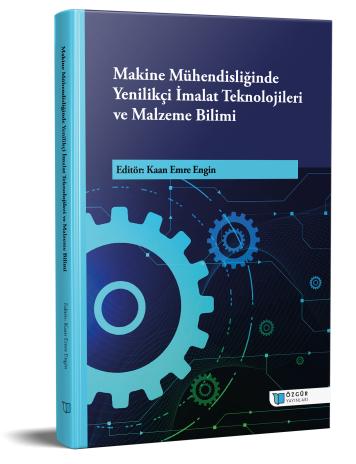
Application-Based Comparison of Non-Traditional Cutting Methods
Chapter from the book:
Engin,
K.
E.
(ed.)
2025.
Innovative Manufacturing Technologies and Materials Science in Mechanical Engineering.
Synopsis
This study provides a comprehensive examination of non-traditional cutting methods, which play a significant role in modern manufacturing processes. Technologies such as laser cutting, wire electrical discharge machining (EDM), plasma cutting, and abrasive water jet (AWJ) are systematically analyzed in terms of their fundamental operating principles, application areas, advantages, disadvantages, and limitations. The technical characteristics of each method are evaluated based on parameters such as workpiece material, thickness range, geometric complexity, surface quality requirements, processing time, and cost.
In the second part of the study, the effectiveness of these methods in various industrial applications is analyzed through comparative examples. Laser cutting stands out in applications requiring high precision and thin sections; wire EDM is preferred for conductive materials with complex geometries; plasma cutting is effective for rapid processing of thick and large steel components; and water jet cutting is advantageous for brittle materials where thermal effects must be avoided.
The study emphasizes the importance of selecting the most appropriate method according to specific production requirements and highlights the strategic role of these technologies in modern and sustainable manufacturing processes.

